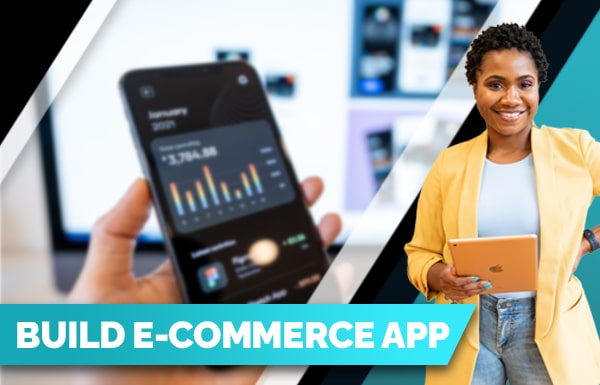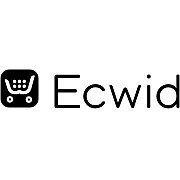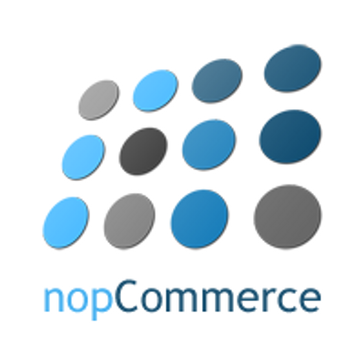Build E-commerce App
Build E-commerce App Table of Contents
- Build An E-commerce App
- Define The Goals Of Your E-commerce App
- The Target Audience Of Your E-commerce App
- Select The Right Technology
- Progressive Web Apps
- Native Apps
- List Of Requirements Necessary For Building An E-commerce App
- Pick The Right Budget And Process
- Building A Bespoke Application
- The Advantages Of A Bespoke App
- The Disadvantages Of A Bespoke App
- SaaS Solution
- The Advantages Of A SAAS solution
- The Disadvantages Of A SaaS solution
- Market Your App
- Overview of Build E-commerce App
- Best Ecommerce Solution by Rating
- Best Ecommerce Solution by Price
- Best Ecommerce Solution by Rated Features
- Check Your Ecommerce Solution Offers Round The Clock Support
- Make Sure Your Ecommerce Solution Offers The Features You Need
- Best Ecommerce Software Solution Verdict
- Ecommerce Software Frequently Asked Questions
- What is the best Ecommerce Solution?
- What is the cheapest Ecommerce Solution?
- Is there a free Ecommerce Solution?
- View all of the top Ecommerce Software Solutions
- Ecommerce Alternatives
- Ecommerce VS Side by Side Comparisons

Build An E-commerce App
In this digital era, having an e-commerce app is crucial for all the categories of businesses working in all industries. However, having an online store is not enough to boost your sales and increase your base of customers. You have to ensure a great user experience for your website visitors; otherwise, you will fail.
Another significant development is that today's online stores have to be mobile-friendly. Statistics show that more than 60% of internet traffic is mobile.
Here are the steps to create an e-commerce app.
Define The Goals Of Your E-commerce App
Defining the goals of your e-commerce app will allow you to set relevant features and functionalities of your app in a more efficient and easier way. Besides, it will help you measure the success of your app.
To be able to set your goals, you may think about the following ideas:
- The size of monthly traffic generated by your store.
- The share of total mobile traffic.
- Estimate your mobile conversion rate.
The Target Audience Of Your E-commerce App
Different types of customers may have different needs and preferences. Knowing your target customers may allow you to use marketing strategies more efficiently.
You can analyse your target audience using segmentation based on the following factors:
- Average age of your audience.
- Interests.
- The ways your customers find you, etc.
Select The Right Technology
In this step, you have to choose the type of your application. E-commerce retailers have two options: progressive web apps (PWAs) and native apps.
Progressive Web Apps
PWAs are considered as next-generation sites. They offer the same speed, performance and interactivity as native apps; however, there is no need to download them. PWAs work on all operating systems and are perfect solutions if you have a low budget.
Native Apps
To use native apps, the user has to download them from an app store and store it on the phone.
Unlike PWAs, native apps need to be developed separately for iOS and Android operation systems. Due to this feature, native apps fully use the features offered by a mobile phone.
Although storing the app on the phone may seem to be a problem, it is also an opportunity for the app owner. For example, 500mln users visit the Apple app store weekly. So, if you optimise your app to be found easily, you can get many new visitors.
List Of Requirements Necessary For Building An E-commerce App
Your e-commerce app must have a list of must-have features, for example:
- Push messages
- Easy checkouts, which simplifies initial purchases and allows to implement repeat purchases easier. Checkout is the most important feature for all types of e-commerce businesses.
- Look-books.
- Wishlists.
- Multiple payment options, especially if you conduct your business internationally.
- Custom branding and design elements.
- A review/rating system, which will help you gain trust from your potential customers.
- Back-end synchronisation
- Social media integration, which is a very important feature, especially if your audience consists of a younger generation.
- Native experiences, such as swipes, taps, touches, etc.
Pick The Right Budget And Process
Think about how many resources (time, money, etc.) you can and want to invest.
Also think about the level of flexibility you need during the processes of sending out push messages, design changes, building new features, etc.
From this point of view, you will have two options: build a bespoke app and use a SaaS solution.
Building A Bespoke Application
In this case, you hire a development team that will build a brand new application. Usually, large companies adopt this version when creating their e-commerce apps.
The Advantages Of A Bespoke App
- You can create everything you want in a Bespoke app.
- It has the possibility to integrate with any system available.
The Disadvantages Of A Bespoke App
- Requires higher price.
- Development process takes long time.
- You have to do some initial work such as providing requirements.
- Each update charges a feec
- Lack of flexibility after the development.
SaaS Solution
This option is widely adopted by small and medium-size stores. SAAS solutions are developed faster; however, in this case, your app's features are limited.
The Advantages Of A SAAS solution
- Low prices
- Quick development
- Provides full integration with your store (in case if JMango360 is used),
- Mobile-friendly
- New features will not cost money.
The Disadvantages Of A SaaS solution
- It is hard and costly to deal with very specific requirements.
Market Your App
Marketing your app after building it is equally important as creating it. So, you have to know how you will promote your e-commerce app.
Scroll down to read our indepth Ecommerce Platforms guide. What you should know, Ecommerce Platforms features, price plans and support. Pros and Cons of Ecommerce Platforms as a ecommerce, everything is explained below.
Overview of Build E-commerce App
Shopify is a software company that specialises in ecommerce software for small to enterprise level businesses.
Shopify is listed as the best ecommerce software related to Ecommerce Platforms. Shopify was founded in 2006 in Ottawa, Canada and currently has over 6,124 employees registered on Linkedin.
Best ECOMMERCE Solution By Rating
Get our stories delivered
From us to your inbox weekly.
 Shopify
Shopify
 Shopify Plus
Shopify Plus
 Volusion
Volusion
 WooCommerce
WooCommerce
 3dcart
3dcart
 Big Cartel
Big Cartel
 Ecwid
Ecwid
 Kooomo
Kooomo
 Ecomchain
Ecomchain
 Contalog
Contalog
 PayKickstart
PayKickstart
 Upclick
Upclick
 Trusted Shops
Trusted Shops
 PayMotion
PayMotion
 Storbie
Storbie
 Nexternal eCommerce Platform
Nexternal eCommerce Platform
 Virto Commerce
Virto Commerce
 nopCommerce
nopCommerce
 FastSpring
FastSpring
 Gumroad
Gumroad